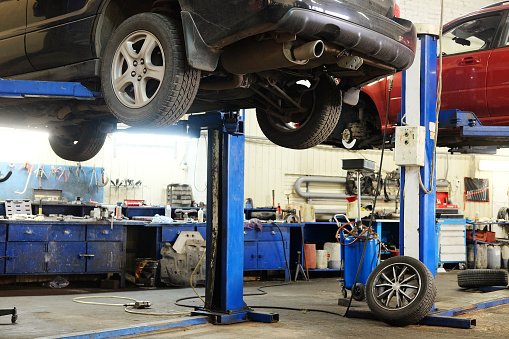All Categories
Featured
Two of the most important tire solutions are tire rotation and placement. If you're strange with what tire rotation and positioning require, below's a comprehensive appearance at why they matter and how they profit your vehicle.
What Is Tire Rotation? Tire turning describes moving your tires from one position to one more to ensure they wear uniformly. The factor tire rotation is essential is because not all tires wear the same means. In front-wheel-drive cars, as an example, the front tires handle both guiding and power, which makes them break faster than the rear tires. The back tires wear differently in rear-wheel-drive and all-wheel-drive lorries.
By turning your tires routinely, you can cancel the wear across all 4 tires. This helps them last longer and allows for more also traction, improving handling and security. A lot of suppliers recommend turning your tires every 6,000 to 8,000 miles or based on the car's handbook.
What Is Tire Positioning? Tire positioning, additionally called wheel positioning, describes the process of changing the angles of your car's wheels to meet the manufacturer's specifications. The objective of alignment is to make certain that all 4 tires are directing in the right direction and at the appropriate angles, which enables ideal handling, safety and security, and tire life.
There are three main positioning angles that are readjusted throughout a positioning check:

Camber: The tilt of the wheels when checked out from the front. If the camber is off, it can lead to unequal tire wear, as the tire will not make complete contact with the road surface area. Wheel: The angle of the guiding axis when seen from the side. Correct wheel placement makes certain that your vehicle is steady when driving straight and that your guiding wheel go back to its regular position after a turn. Toe: The angle at which the tires aim internal or external when checked out from above. Inaccurate toe alignment can cause the tires to drag, leading to irregular wear and decreased fuel efficiency. Misalignment can happen gradually because of typical driving or from hitting challenges like visuals or potholes. If your placement is off, it is very important to get it examined and fixed to avoid issues down the road.
Why Tire Rotation and Placement Issue. Boosted Tire Life:. Regular tire rotation guarantees even tire wear, helping you get the most mileage out of your tires. Unequal wear can create you to change tires prematurely, which can be costly. When your tires put on evenly, they last longer, saving you money in the long-term.
Improved Automobile Handling:. Proper positioning keeps your car driving straight and stable, especially at greater rates. Misalignment can trigger your automobile to pull to one side, making it more challenging to steer. By maintaining your tires straightened, you ensure your lorry deals with much more smoothly and naturally.
Boosted Safety:. Tires that are not rotated or aligned effectively can put on erratically, impacting how well your automobile stops and corners. For example, misaligned tires or tires with irregular wear patterns may trigger decreased grip, particularly in damp or icy problems, causing a higher threat of crashes.
Much Better Gas Performance:. Tires that are misaligned can develop rolling resistance, suggesting your engine has to work tougher to move the cars and truck. This boosts fuel intake and minimizes your car's fuel efficiency. Correct tire alignment lowers rolling resistance, which can improve gas mileage.
Signs Your Tires Required Turning or Alignment. While it's important to stay on top of regular tire rotations and positionings, there are a couple of indications that might suggest your tires need attention:
Irregular Wear: If you discover that tire is much more used than the others, it's most likely time for a turning. Steering Pull: If your automobile pulls away or feels off-center, it might be an indicator of imbalance. Vibrations: If you really feel resonances in the steering wheel or the automobile, it could be as a result of an alignment problem. Noisy Tires: Squealing or loud tires might suggest inappropriate turning or imbalance. If you discover any one of these indicators, it is essential to get your tires examined by an expert.
Just How Frequently Should You Revolve and Straighten Your Tires? Tire turning should typically be done every 6,000 to 8,000 miles, though this can vary based upon your driving problems and the sort of lorry you drive. It's additionally an excellent idea to have your tires turned whenever you get an oil modification.
For placement, you must have your tires aligned every 1-2 years, or more regularly if you notice any kind of issues with managing or irregular tire wear. If you struck a big pit or aesthetic, it's a good idea to get a positioning inspect right now.
Verdict: Routine Upkeep for Ideal Performance. Tire rotation and placement are 2 basic but vital services that keep your vehicle running smoothly, effectively, and securely. By rotating your tires routinely and keeping your wheels correctly straightened, you can extend the life of your tires, improve handling, and delight in much better gas performance.
Latest Posts
Experience You Can Trust with Bathroom Fitter Metro Detroit
Developed on High Quality, Driven by Solution
Speedy Fixes for Your Vehicle - Schedule with Montclare Auto Repair Today